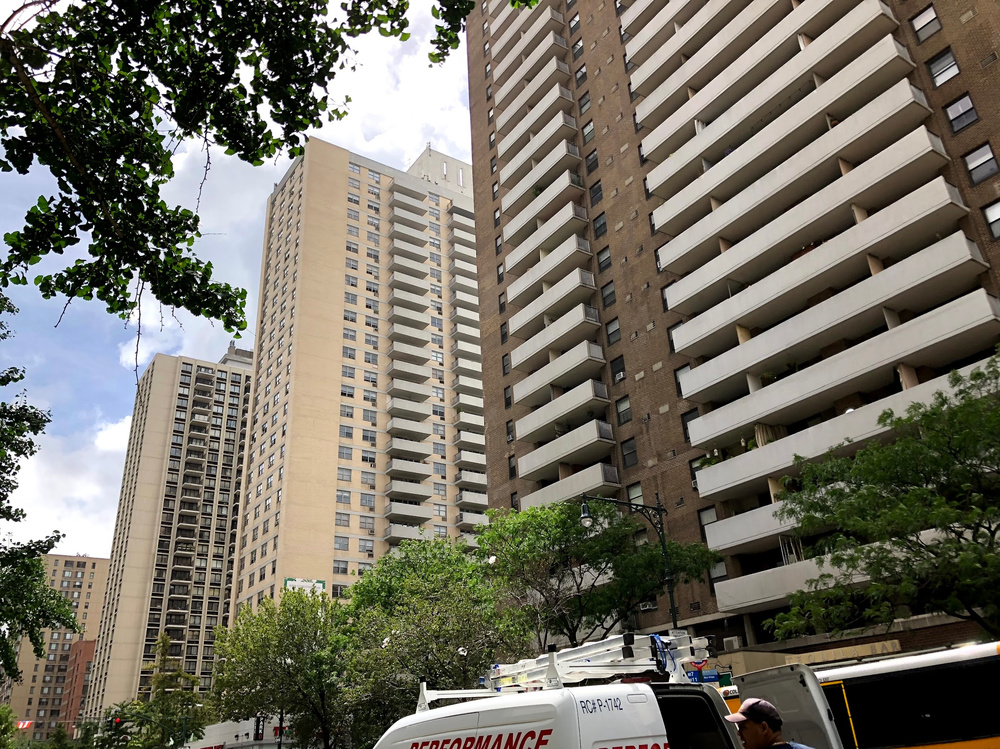Last Chance to Catch NYC's Holiday Notalgia Train
We met the voices of the NYC subway on our nostalgia ride this weekend!

In her new memoir, Just City, filmmaker Jennifer Baum shares personal stories of growing up in affordable housing on the Upper West Side!

When she transferred to private school at Columbia Grammar and Preparatory School (CGPS) upon entering the fifth grade in 1973, Jennifer Baum realized her upbringing was different than that of her classmates. While many of her peers lived in sprawling luxury apartments at buildings like the San Remo, Baum was raised in an economic three-bedroom unit at 150–160 West 96th Street. Known as RNA House, the complex was developed for middle-income families under the Mitchell-Lama Housing program and was part of the West Side Urban Renewal Project. Though during her private school days Baum “saw little value in the egalitarian philosophy behind subsidized housing,” she shares how her relationship with RNA House evolved throughout her life in her new book, Just City: Growing Up on the Upper West Side When Housing Was a Human Right, a work she describes as “a hybrid memoir about housing history and my search for home.”
Join Baum on June 26th, 2024 for a live virtual talk where she’ll discuss the history and legacy of Mitchell-Lama housing on the Upper West Side, share memories and photographs from her childhood at RNA House, and explore the benefits and flaws in the Mitchell-Lama program. This talk is free for Untapped New York Insiders! Not an Insider yet? Become a member today with promo code JOINUS and get your first month free!
Baum’s family—her parents, and an older sister Elizabeth—moved into RNA House in 1967. The Baums purchased apartment 14E, an open floor plan, south-facing unit on the 14th floor, below market rate at $3,800. At RNA House, monthly maintenance fees were based on the family’s income. It was an integrated cooperative where Baum’s secular Jewish family lived alongside Puerto Rican, Black, Jewish, Chinese, and interracial families. Using RNA House as a focal point, Baum’s book traces the evolution of New York City’s affordable housing landscape through her own experiences and those of her family and friends.
In telling of her great-grandparents’ lives in Lower East Side tenements, Baum shares a common tale of displacement caused by eminent domain and a growing early 20th-century city. The earliest subsidized housing laws and the founding of the New York City Housing Authority (NYCHA) happened during the Great Depression when her maternal grandparents had to take in multiple family members to help maintain their small Brooklyn apartment. In the 1950s, believing in “the dream of equality through architecture,” Baum’s parents brought their family to RNA House.

Baum witnessed firsthand the proliferation of affordable housing complexes in the West Side Urban Renewal area throughout the 1960s and 1970s. She played with kids from other subsidized housing complexes within the 20-block region that stretched from 87th to 97th Street between Amsterdam Avenue and Central Park West. The kids walked to school together, played in each other’s yards, and listened to Jazzmobile concerts. Despite the constant construction noise and polluted air surrounding it, the RNA House of Baum’s childhood was a utopia where neighbors looked out for each other and everyone contributed to the betterment of the community. Later in life, Baum reconnected with many people who grew up in the neighborhood and she shares their stories in her book.
In the 1970s and 1980s, Baum was reeling from the sudden death of her father as the city was reeling from a financial crisis. Baum watched the utopia of her youth slip away as the area’s first luxury apartment tower rose. Under Giuliani’s administration in the 1990s, gentrification and privatization began. Baum’s life would take her far from home, to France, Vancouver, and Arizona, though she constantly felt the pull of New York City and the camaraderie of RNA House.
The city’s most recent housing crisis prompted Baum to write her book. In an era now where affordable housing is offered via lottery and formerly subsidized complexes are rapidly becoming privatized, Baum wanted to share her memories of a “just city” (taken from a line in a W.H. Auden poem), a time when the common good ruled and “politicians, urban planners, and architects combined forces to build affordable housing en masse.”
Through photographs, personal accounts, and thorough research, Baum creates a moving portrait of New York City’s housing scene. She dispels the perception of Brutalist subsidized housing buildings “as monstrosities, populated by low lives and located in dangerous neighborhoods.” Though she doesn’t shy away from pointing out the flaws in New York City’s affordable housing programs, in Baum’s “just city” these places are welcoming and safe places ruled by fair play and collectivism, a home she returns to time and time again.
Next, check out Secrets of the Upper West Side
Subscribe to our newsletter